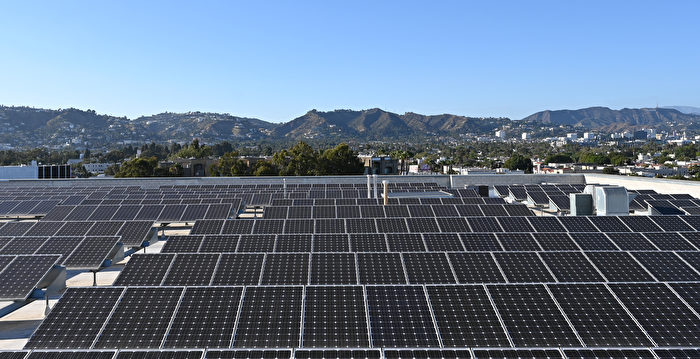[The Epoch Times, August 27, 2022](Comprehensive report by Li Siqi, a reporter from the Epoch Times Special Department) Two days after US President Biden signed the Inflation Reduction Act (IRA) on August 16 (18) , the U.S. Solar Energy Industries Association (SEIA) is calling for stronger energy transmission planning rules to meet the rapidly growing solar market. But academics have called for consideration of the waste and toxic pollution from solar manufacturing.
SEIA President Abigail Ross Hopper said on August 16 that the IRA will help the U.S. deploy sufficient clean energy, support U.S. solar energy production through new tax credits, and provide a stable policy environment for solar and energy storage companies. Ushering in a new era for solar manufacturing in the United States.
SEIA sorts out the terms in IRAs related to solar energy. The IRA extended the residential solar panel and commercial power plant investment tax credit for about 10 years and increased the subsidy rate. The IRA will provide a total of $4.3 billion for state energy offices and $224 million for Indigenous peoples as a tax rebate for home energy upgrades. While the IRA imposes a maximum value, all final tax refunds are subject to state implementation, which may increase the amount for low- and middle-income families as appropriate. The IRA also subsidizes different segments of the solar panel manufacturing industry to varying degrees, while offering investment tax credits of up to 30 percent on equipment investments.
SEIA has released a new roadmap for solar energy development on August 18, and the established goal is that the solar panel production capacity of the United States will reach 50GW (gigawatts) by 2030, and solar energy can reach 30% of the electricity generation in the United States by 2030. .
While solar energy is known as a clean energy source, the issue of waste and toxic pollution from solar panel manufacturing has been under the spotlight. 3 academics focusing on the impact of new technologies on supply chains, sustainable development and the circular economy, have studied the link between the adoption of renewable technologies and the resulting waste, and published in October 2021 in International Production Research An article was published on the website of the International Journal of Production Research on the potential waste of solar panels as a renewable technology.
The article’s abstract says: Sharp declines in solar panel installation costs and improvements in energy conversion efficiency have been observed, driving rapid growth in the application of this technology, but early retirement of solar panels is common. Considering the motivations of U.S. households to replace solar panels and forecasting the resulting panel waste, a numerical analysis shows that over the next 10 years, new waste from solar panels could exceed the number of new solar panels installed each year, which could make solar power more expensive More than doubling and jeopardizing the cost competitiveness of solar technology for the foreseeable future. The article highlights the importance of considering circular economy prospects in the design of renewable energy systems and calls for further research in this area.
The three scholars are Serasu Duran, assistant professor of operations and supply chain management at Haskayne School of Business, and Atalay Atasu, professor of technology and operations management at INSEAD. ) and Professor Emeritus Luk Van Wassenhove.
“Harvard Business Review” magazine (Harvard Business Review) also published an article by the three scholars on June 18 last year, exposing the “dark side” of the solar industry. Because solar panels are being replaced faster than expected and recycling costs are high, there is a risk of landfilling old panels. Regulators and industry players need to improve the economics and scale of recycling solar panels before the solar panel industry avalanches.
Michael Shellenberger, the founder of the American non-profit organization “Environmental Progress”, published an article in “Forbes” on June 21 last year, using the “dark side” of solar energy disclosed to reiterate an article he published three years ago. . The article caused a lot of controversy at the time – the production of solar panels produces toxic pollution. “Solar panels are not clean and actually produce 300 times more toxic waste than highly reflective nuclear waste,” Shellenberger said in the article.
Editor in charge: Lian Shuhua
